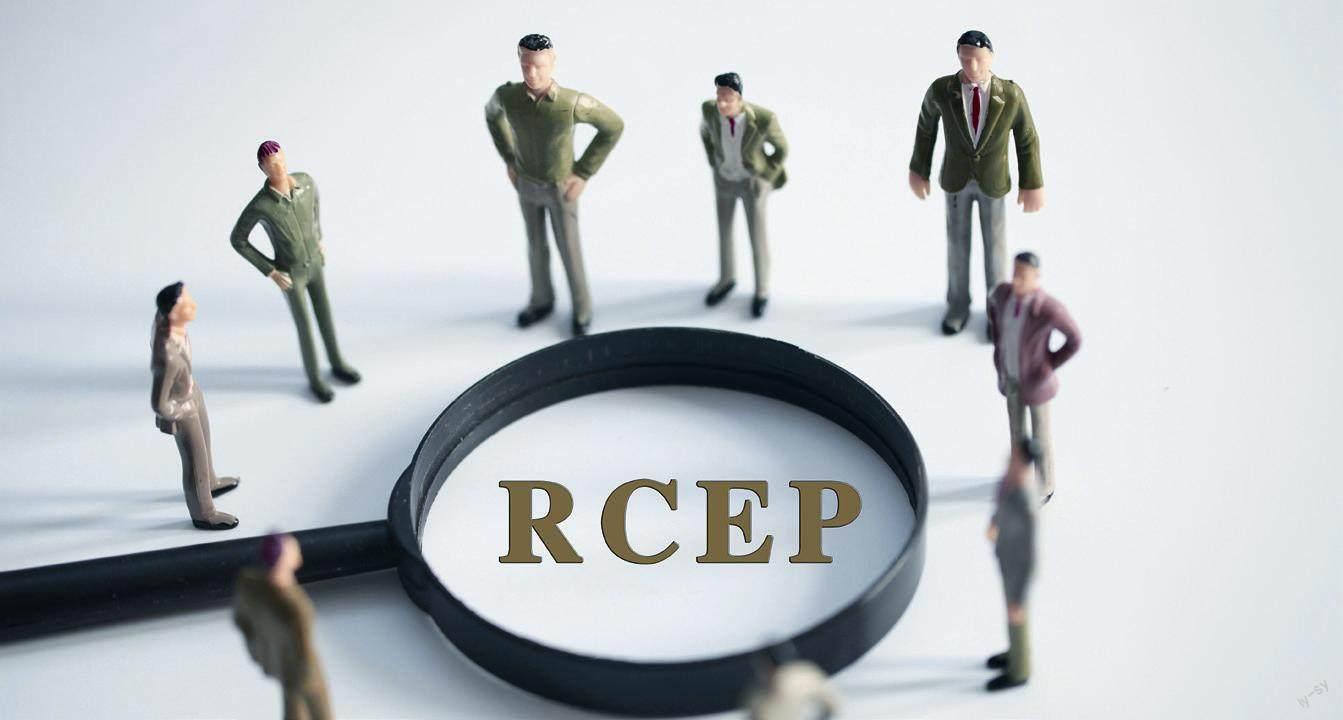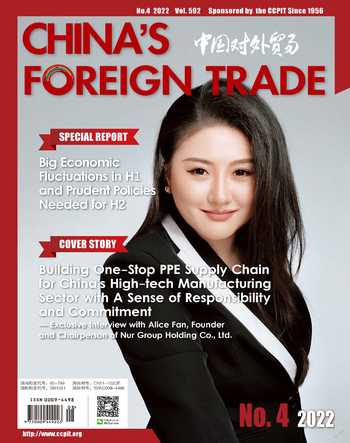China,Japan and South Korea Discuss New Opportunities Brought About by the RCEP
By Lily Wang

This year marks the 50th an- niversary of the normalization of diplomatic relations between China and Japan, and is also the 30th anniversary of the establishment of formal diplomatic relations between China and South Korea. The signing of the RCEP has opened up new developmental opportunities for all three countries.
The fifth China-Japan-Korea Business Conference was recently held in Zhejiang. Around 400 business delegates from the three countries gathered in Shaoxing City to discuss how to further cooperation and achieve better development under the framework of the RCEP.
Lay the foundations for cooperation
“For quite a long time, China, Japan and South Korea have maintained very close business relations. Last year, the trade volume between China and Japan amounted to USD 371.4 billion, up by 17.1%; the trade volume between China and South Korea reached USD 362.35 billion, up by 26.9%,” said CCPIT Secretary–General Yu Jianlong at the opening ceremony of the conference.
Yu also said that since the RCEP came into force at the beginning of this year, all member countries of the RCEP, including China, Japan and the Republic of Korea, have actively promoted the implementation of the agreement. Over the past 6 months, the agreement has achieved positive results. He said:“On the one hand, the RCEP helps to create a transparent and open business environment, promote the coordination of economic and trade rules and systems, facilitate trade and investment in the Asia Pacific region, and reduce business costs. On the other hand, the RCEP helps to build a complementary and inclusive industrial chain division system, and promote the integration and upgrading of regional industrial chains and coordinated economic development.”
Mizutani Jun, Business Counselor of Japans Embassy in China, expressed that Japan has always adhered to the principle of free trade and promoted the development of RCEP agreements within the scope of world trade. “We wish to work with China and South Korea in various fields. We look forward to the stable and sustainable development of enterprises in China, South Korea and Japan, ” he mentioned.
Cheng Yonghua, former Chinese Ambassador to Japan, said that China, Japan and South Korea are geographically close, culturally connected and economically complementary. They are close trade cooperation partners due to the fact that the industrial and supply chain of the three countries are closely intertwined. He believes that the economic structure of RCEP member countries is highly complementary, and the capital, technology and labor factors in the region are complete. The Asia Pacific re- gion is still in the initial stage of forming a unified market with high levels and standards, and economic cooperation in the RCEP region still has large amount of space in which to develop.
Kawai Arawa, Deputy Chairman of the Japanese Chamber of Commerce and Industry in China, said that according to a questionnaire conducted by the Japanese Chamber of Commerce and Industry in China and the Shanghai Japanese Commerce & Industry Club, Japanese enterprises have no intentions of leaving China. “In the Chinese market, which is expected to continue growing, many Japanese enterprises are doing their best to expand their operations.”
Lee Jae Keun, Minister–Counselor of South Korea Embassy in China, suggested that first, the three countries need to establish an open and inclusive regional free trade order. As a trading country growing up through opening up, various cooperation systems are expected to become catalysts for deepening the breadth and depth of trilateral trade. Second, the three countries should jointly sta-bilize the global supply chain. Finally, it is also important to further cooperate in the field of green energy to address the issue of climate change. The manufacturing industry is the main consumer of energy of the three countries, so it is not easy to achieve green energy goals. “If the governments and enterprises of the three countries seek common solutions through division of labor and cooperation, it will be possible to reduce the cost and time required to achieve carbon neutrality and create greater growth and new business opportunities,” he said.
Kim Honggi, the Chief Deputy Chairman of the Korea Chamber of Commerce in China, said that the signing of the RCEP is the first step towards the establishment of a free trade agreement among China, Japan and South Korea. This will be a solid foundation for the economic cooperation of the three countries.
Bai Fanqin, Deputy Secretary–General of the Trilateral Cooperation Secretariat, said that the enforcement of the RCEP will further invigorate the economic activities and exchanges among the tree countries and will bring about tangible results for regional economic cooperation.
Shi Huifang, Deputy Secretary of the Shaoxing Municipal Party committee and mayor, said in his speech that through decades of effort and development, economic and trade exchanges among China, Japan and South Korea have become increasingly frequent, and the people-to-people friendship of the three countries has also improved. As the host city, Shaoxing will continue to enlarge the brand effect of the conference, and build more national open platforms, such as comprehensive bonded areas, cross-border e-commerce comprehensive pilot zones, and market procurement trade mode pilot schemes. It will combine the “bringing in” and“going out”, in order to advance highlevel economic and trade exchanges with Japan and South Korea, and will promote win-win situations for all.
Master the rules and prevent risks
Since the RCEP came into force, it has had a profound influence on trade and investment among China, Japan and South Korea.
According to Song Chengzhe, a partner at Zhonglun Law Firm, since the RCEP came into force, the proportion of zero-tariff goods exported from Japan to China has increased from 8% to 86%. Moreover, it has created tariff reductions for agricultural product trades between China and Japan under the RCEP framework for the first time. The RCEP cumulative rules of origin have also had a new impact on the trade between China and Japan. As for the trade between China and South Korea, the RCEP has made further breakthroughs in terms of product items when compared with the past FTA. For example, pilose antler exported from China to South Korea has enjoyed zero tariffs. Textiles and stainless steel exported from South Korea to China have also achieved zero tariffs. The free trade between the two countries has thus been further enhanced.
Song further explained that China is one of the major consumers of semiconductors globally. Since the RCEP came into effect, the reduced tariffs on semiconductors have brought huge benefits to Chinas wafer factories and packaging and testing factories; in addition, the supervision of cross-border e-commerce among China, Japan and South Korea is a difficult problem.“Companies from the three countries have enjoyed great benefits from the RCEP trade facilitation, but they should also improve their knowledge about cross-border e-commerce and effectively prevent the legal risks,” he said
Song Chengzhe believes that the RCEP rules create a more fair, open and transparent environment, which is conducive to mutual investment for financial institutions from China, Japan and South Korea. Especially in the field of health services, China has made a clear commitment to not set a ceiling on the proportion of foreign investment in pension services, and to provide a platform for China, Japan and South Korea to further strengthen exchanges and cooperation when solving the problem of population aging. China, Japan and South Korea also have great advantages in terms of cooperation in the knowledge intensive field of shipping logistics.
Tan Weihong, an academician at the Chinese Academy of Sciences and director of the Institute of Medicine of the Chinese Academy of Sciences, also said: “building the health industry into a new highlight of the cooperation between China, Japan and South Korea is not only promising, but is also of great significance for improving the industrial development level of the three countries and promoting the sustainable development of both the economy and society.”
Song Chengzhe explained that generally speaking, the investment rules of the RCEP are relatively fair, open and transparent, which will attract foreign investment into the region and promote economic development.“Particularly for Chinas semiconductor industry, if we can leverage the advantages of the three countries and make sound interactions within the semiconductor industry, a lot of problems will be solved. Also, the three countries have huge cooperation space in the fields of artificial intelligence and hydrogen energy storage.”
Chen Zongyao, Chairman of the CCPIT Zhejiang, said that the formal implementation of the RCEP will vigorously promote regional economic development. The CCPIT Zhejiang will continue to build platforms and provide services. It will work with friends of the business circles of the three countries to make positive contributions to promoting intra–regional trade and investment exchanges and strengthening friendly cooperation.
It is reported that Shaoxing has held the China–Japan–Korea Business Conference for five consecutive years. This city has seized the opportunity brought about by the RCEP and supported enterprises in developing the markets of the RCEP region. From January to May this year, Shao xings imports and exports to other RCEP member countries reached RMB 31.632 billion, a year-on-year increase of 39.64%. During the conference, Shaoxing received the 2022 Outstanding Contribution Award for China-Japan-Korea Economic and Trade Exchange and the 2022 ChinaJapan-Korea Business Environment Demonstration City Award.
- China’s foreign Trade的其它文章
- Zero Tolerance for Bad Faith Trademarks By Chinese Authorities
- Focus on Seven Aspects of the Amendments to the Anti-Monopoly Law
- Off-shore Duty-free Consumption in Hainan Surges
- New Infrastructure Construction Promotes the Stable Growth of the Chinese Economy
- China’s Automobile Exports Catch Up from Behind
- The Logistics Industry Turns Positive

